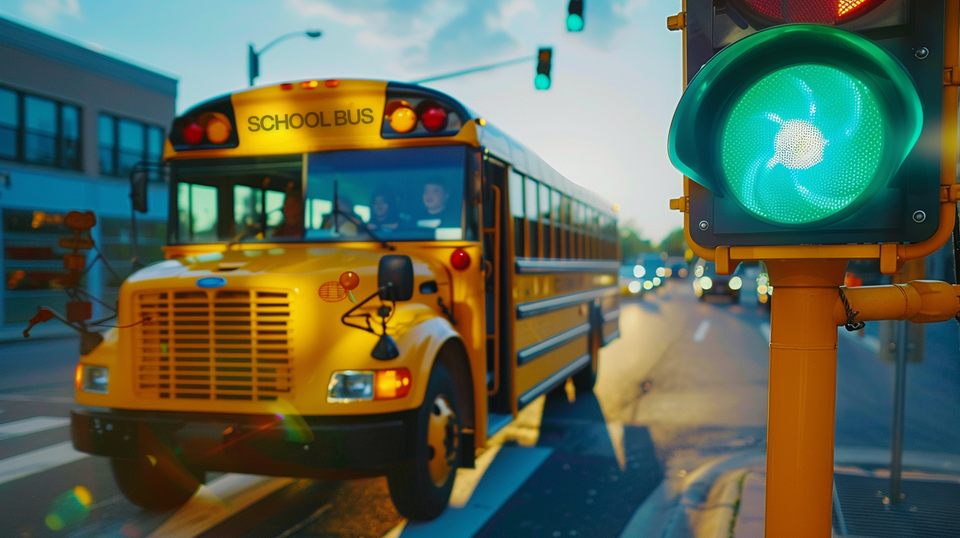Make Room For Stale Green Lights

My favorite job in college was as a bus driver - first, as a campus bus driver for Texas A&M, the second largest campus in the country, where over 110 buses were needed to get students on and off campus and from one side of campus to the other. And then secondly, even better, as Mr. Andy, the bus driver for the local school district
I've always been a morning person, even in college. And so this was the perfect job for me. I would get to the bus barn with all the other bus drivers, some of which had been doing this for 30 or 40 years, and have a morning coffee. And then, one by one, we'd head out to our big yellow school buses. First, to pick up the elementary school kids on our assigned route for the day. After the elementary school kids were dropped off at their school, back out on the same route to pick up the middle school and high school kids.
One of the concepts that the bus driver trainers most emphasized in training for the commercial driver's license was the Stale Green Light. When driving a 40-foot bus, an 18-ton school bus with 60 children in the back, I quickly learned just how different it was from driving anything else and just how important paying attention to and making your decision about stale green lights can be.
The working definition of a stale green light is one that was green when you first saw it. So, if you made a turn onto the road or came up to the intersection and the light was already green, it is stale. That is when you must decide long before you ever press the brake or the gas pedal.
Stale greens require you to commit to your go/no-go much further ahead of time than driving a car would. You have to decide whether you're going to make it through that intersection no matter what, or you're going to back off the gas and slowly ride your brake, waiting for the green to turn to yellow eventually, and you'll sit through the red light cycle.
You've got a lot of bus behind you, and it takes a while to slow down, not to mention any quick braking will disturb the 60 kids you have on board, all of which are not wearing seatbelts.
(I still don't understand - we have to wear seat belts on a plane but we don't have to wear seat belts on a bus?)
A stale green is a decision point long before you're forced to make a decision. You're leaning in or you're leaning out. You're saying I'm gonna make it through or you're saying I'm gonna to tap the brakes on this one. But once you decide, you have to commit to that decision.
It takes a little while to get used to the cycle of lights, the cycle of your route, and the frequency with which different intersections flow. Does it go straight from green to yellow to red or from green to a right turn arrow that keeps it green for through traffic? Are certain lights shorter or faster based on where they are on campus or in the surrounding town? Does the crosswalk have a countdown timer you can use to gauge how much time is left on this greenlight?
What are the stale greens in our lives, and how should we treat them differently than a new green light?
What opportunities or relationships have been green for a little while, but if we aren't paying attention, you turn yellow or red while we still haven't decided how we're going to handle the change?
If we know that we're going to keep pressing on and make it through the next intersection no matter what, we can drive with confidence, our eyes wide open to what we need to do to make it through.
But if on the other hand, we might realize that this formerly fresh green light has grown stale and that it is the right time to acknowledge the changing lights and begin slowly tapping the breaks.
Things have cycles, and sometimes, we need to let things come to a stop that are no longer clear green. But in making that decision long before coming to the intersection of choice, we can slow our 18 tons of momentum and make sure all passengers are safe as we do. A controlled stop preserves our ability to wait for the next green and resume when the next cycle begins.
So today, when you see a green light, ask yourself: is it stale or fresh?
And ask the same when you look at the opportunities and relationships you see today.
